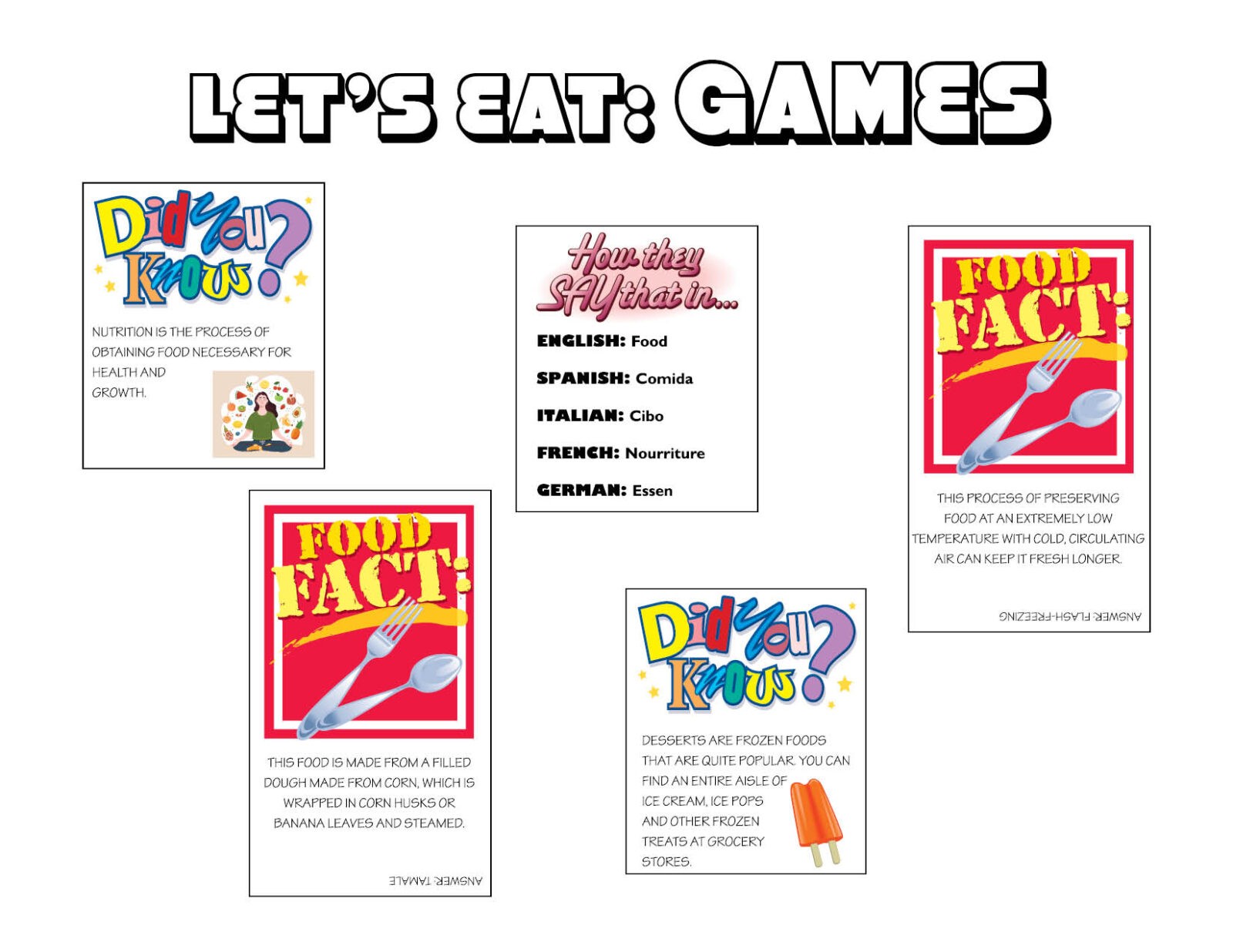
Let’s Eat Online Index
Submit your recipes to be included in our digital recipes section – Let us know if you want your first name and town included in the post.
Articles
A Summer Dessert That is Just Peachy
Backyard Barbeque Essentials
Did You Know?
Grill Safely This Summer
Helpful Tips for Picking & Cutting Watermelon
How to Avoid Food Poisoning When Grilling This Summer
How to Build a Better Burger
How to Make Grilling Healthier
Improve Comfort When Dining Outdoors
Make Your Memorial Day Barbeque a Success
Must-have Items for Summer Entertaining in the Backyard
Outdoor Movie Night Essentials
What is Country Cooking?
Coloring and Games Pages
Coloring Page 1
Coloring Page 2
Coloring Page 3
Games Page
Recipes
Barbecue Seitan Skewers
Blueberry Lavender Lemonade Cocktail
Classic Coleslaw
Greek Yogurt Potato Salad
Grilled Flank Steak with Chimichurri
Roasted Vegetable Focaccia Sandwich
Sloppy Joes
Slow-Cooked Pulled Pork
Speedy Beef Stir-Fry with Chunky Vegetables
Thank You to Our Advertisers
Aloha Jay’s Malasadas
Baringer Bros. Meats
Blooming Glen Pork & Catering
Captain Bob’s Seafood
Davis Meats
Freed’s Building N’ Decorating, LLC
Haring Brothers, Inc.
Harrow Beverage
Link Beverages
Pappy’s Orchard and Bakery
Paragon Catering / Kasey Lynn’s / Hootz
Sines 5 & 10
Tohickon Tavern & Family Restaurant
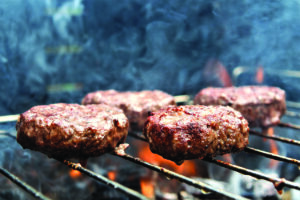
How to Build a Better Burger
Backyard barbecue season is starting to heat up. Although many people grill all year long, grilling season kicks into high gear in spring and summer.
Burgers will always be quintessential grilling fare. It should come as no surprise that the month of May is National Hamburger Month. That’s likely due to Memorial Day weekend – which many view as the unofficial start of summer – being one of the first times of the year people begin grilling burgers. Despite burgers’ popularity, it’s easy to make mistakes when preparing them. These tips can help anyone build a better burger.
Use freshly ground meat
Buying ready-made ground meat (of any variety) is taking a gamble because you don’t know when it was ground, how many animals it came from or how it was handled. By freshly grinding the meat at home you will have greater control over the cut of meat and the fat content. Personally ground meat will be fresher, especially when you get nice cuts of meat directly from your local butcher. Top chefs suggest dicing cold meat into chunks and freezing for about 10 minutes prior to grinding for the best results.
Fat is key
For the most juicy, flavorful burger, you’ll want a ratio of 80 percent meat to 20 percent fat. Some people like to eat lean, but with a burger, the fat will be necessary and it’s better to select leaner meats for other dishes.
Don’t overwork the meat
Handling the burger patties too much can lead to dense, tough burgers. Gently shape the burgers into round, 1-inch thick, flat discs. To prevent the burgers from rounding in the middle during cooking, press a dimple with your thumb in the center of the patty to help it cook evenly. It’s a smart idea to weigh each patty to ensure uniformity of size and even cooking.
Don’t add salt early on
Salt added to the ground meat before it’s shaped can draw the liquid out of the meat, leaving a dry burger behind. Sprinkle salt sparingly while it is cooking for flavoring.
Avoid overcooking
Most health authorities recommend not leaving any pink meat in a burger made from ground meat. According to BBC Good Food, burgers can be cooked for 5 to 6 minutes on each side for medium and 8 to 9 minutes per side for well done. For the best results, use a food thermometer to check internal temperature. The USDA says ground meat, whether it’s pork, veal, beef, or lamb, should be cooked to 160 F
Flip as desired
The cooking resource Serious Eats debunked the myth that burgers should only be flipped once. Flipping the burger repeatedly, as often as once every 15 seconds, encourages faster, more even internal cooking and can dramatically reduce cooking time.
Keep the patties separate
Let everyone build their own burgers, as keeping the cooked meat away from the burger buns for as long as possible will reduce the chances of the juices making the buns soggy. Soft, squishy buns tend to make for good burger eating, as they will not overwhelm the meat with too much crusty bread.
The smell of grilling burgers is in the air. Ensure that every burger is a masterpiece by utilizing some important cooking tips.
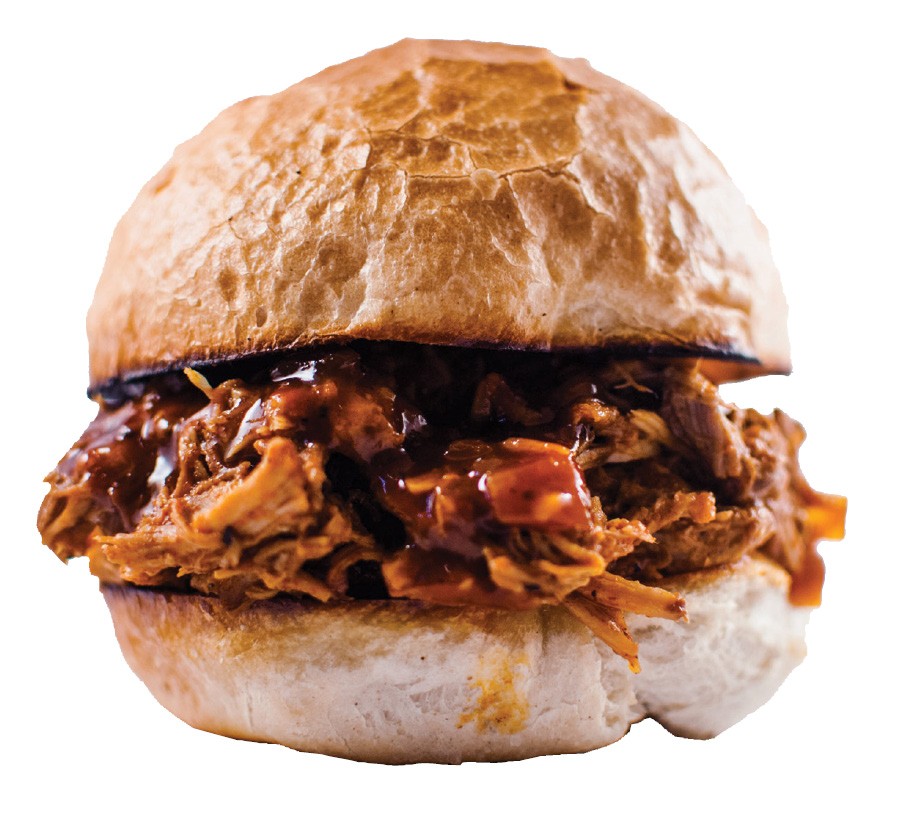
Slow-Cooked Pulled Pork
Serves 8
Sauce
1 cup chili sauce
1/3 cup Dijon or grainy mustard
1/3 cup liquid honey
2 tablespoons chili powder
2 tablespoons tomato paste
2 tablespoons Worcestershire sauce
1 tablespoon packed brown sugar
2 teaspoons paprika
2 large cloves garlic, minced
2 cups sliced onions
3 to 4 pounds frozen pork shoulder roast, thawed after roast
2 cups chopped apples
Large ciabatta rolls, onion or crusty buns, mashed potatoes, or rice
At home: Mix together the chili sauce, mustard, honey, chili powder, tomato paste, Worcestershire sauce, brown sugar, paprika, and garlic. Store in a tightly sealed container or freeze for longer storage.
At camp: Place onions in the bottom of a Dutch oven. Thaw pork, place over onions; top with apples. Pour sauce over meat and apples. Cover and cook on medium heat for 4 hours or until meat is tender and starts to fall apart. Remove meat from oven and place on a large plate. Using two forks, shred meat along its length. Stir meat back into sauce. Serve on rolls, or as desired.
Click to expand

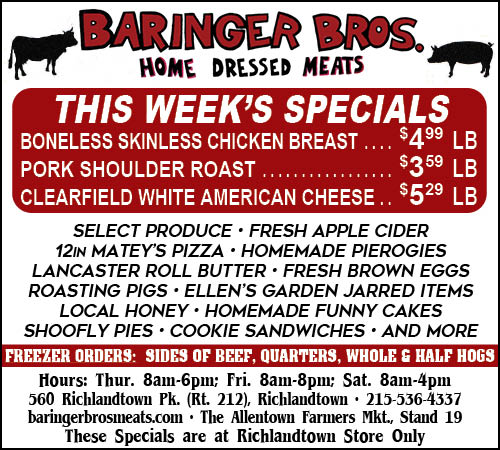

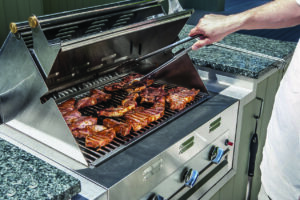
Grill Safely This Summer
Plenty of people can be found working their grilling magic year-round. But the vast majority of people do the bulk of their grilling over the summer, when warm temperatures contribute to a relaxed atmosphere that makes outdoor cooking and dining that much more appealing.
The relaxing nature of summer can make it easy to overlook safety, particularly when grilling. However, the right safety measures when cooking over an open flame can prevent home fires and other accidents that can cause injury and even death. In recognition of the many things that can go wrong when grilling, the Federal Emergency Management Agency and the U.S. Fire Administration offer these simple fire safety tips that every grillmaster can keep in mind as summer grilling season hits full swing.
· Only use a grill outside. Grills should never be used indoors, and that includes in garages with the doors open. Before lighting a flame, make sure the grill is at least three feet from siding, deck rails and eaves.
· Establish a safe zone around the grill. A three-foot safe zone around the grill can decrease the likelihood that pets will run into and potentially tip over the grill. Kids can be taught to respect this zone as well so they avoid being burned.
· Open a gas grill before lighting it. Charcoal grills, hybrid grills and smokers cannot be lit unless the lid is lifted. That isn’t the case with gas grills, but gas grills should never be lit with the lid closed. If a gas grill is lit with its lid closed, gas can build up inside and that could cause an explosion. Even if there’s some summer rain falling, open the lid on a gas grill before turning the ignition switch.
· Keep an eye on the grill at all times. It’s tempting to walk away from a grill while food is cooking, but someone should always be tasked with staying close to the grill. If cooks must walk away, ask another adult to stay close to the grill until you return. All it takes is a few seconds for a fire to start.
· Clean the grill regularly. Regular cleaning of the grill is both healthy and safe. Cleaning helps to ensure the cooking surface is clean and unlikely to cause food poisoning. But a grease-free grill also poses less of a fire hazard than one that hasn’t been cleaned.
· Let coals cool before discarding them. Coals from the grill should be given ample time to cool before they’re removed from the grill and discarded.
· Remember to turn the gas valve to the off position after cooking. When cooking with gas grills, cooks must remember to turn the valve to the off position once all the food has been cooked.
Simple safety measures can ensure summer grilling season goes off without a hitch.
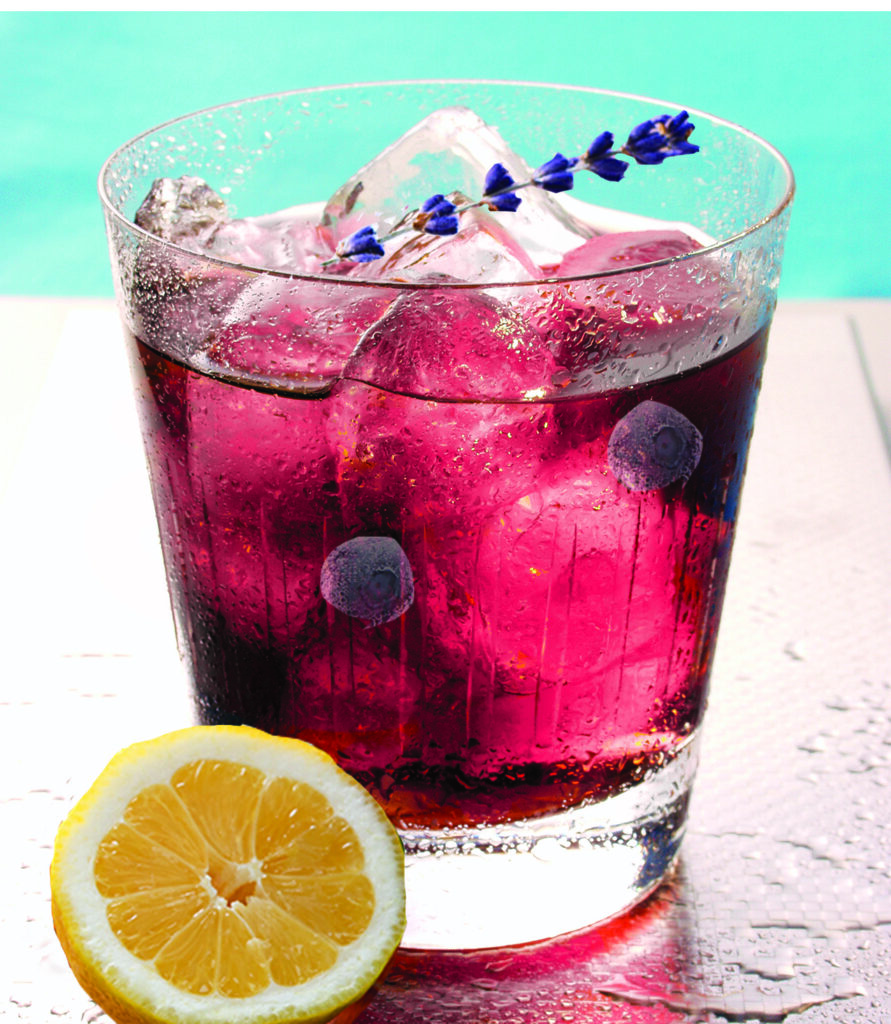
Blueberry Lavender Lemonade Cocktail
Makes 2 servings
Lavender Simple Syrup
1/2 cup granulated sugar
1/2 cup water
1 tablespoon dried edible lavender flowers
3/4 cup blueberries, divided
2 tablespoons fresh lemon juice
2 ounces gin
1 tablespoon lavender simple syrup
1/2 cup club soda
2 sprigs fresh lavender
2 lemon wheels
1. To make the Lavender Simple Syrup: In a small saucepan set over medium-low heat, combine all syrup ingredients and cook, stirring occasionally, for 3 to 5 minutes or until sugar is dissolved.
2. Remove from heat and let steep for 2 to 3 hours. Strain and set aside.
3. To make the Blueberry Lavender Lemonade Cocktail: In a cocktail shaker, add 2/3 cup blueberries and lemon juice. Muddle berries to release juices. Add gin and lavender simple syrup, and fill with ice. Shake until frosty.
4. Strain through fine-mesh sieve into two ice-filled glasses. Top evenly with soda water.
5. Garnish with remaining blueberries, lavender sprigs and lemon wheels.
Tip: Cover and store remaining lavender simple syrup in the refrigerator for up to 2 weeks.
Click to expand



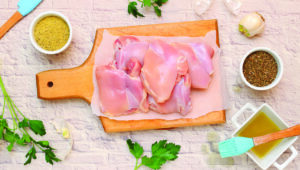
How to Avoid Food Poisoning When Grilling This Summer
Cooking over an open flame produces a unique flavor that’s difficult to match. The smoky flavor of grilled foods is hard to resist, especially on summer nights that seem tailor-made for cooking and dining outside.
Cooking over a flame comes with certain safety risks, and those risks are easily mitigated with some simple strategies. It’s equally important that grilling enthusiasts make an effort to reduce the risk of food poisoning when grilling. Dishes used to cook indoors are routinely scrubbed clean after a good meal, but grills rarely garner the same level of post-meal attention, which can increase the risk for food poisoning. And a less-than-spotless grill grate isn’t the only food poisoning risk linked with grilling. The Centers for Disease Control and Prevention offer these tips to avoid food poisoning when grilling in the months ahead.
· Separate raw foods before grilling. Cross-contamination can contribute to food poisoning. The CDC suggests efforts to prevent cross-contamination should begin at the grocery store. Foods should be kept separate in grocery carts and bags, and packages of raw meat and poultry should be kept in their own individual bags.
· Keep foods cool at all times. The CDC recommends picking up meat, poultry and seafood right before checking out so the food remains as cool as possible at all times. If it’s a long drive from the store to home, which can be the case when grilling foods that must be purchased at specialty stores or fisheries instead of traditional neighborhood grocery stores, shoppers can place items in insulated coolers and keep them at 40 F or below. All raw meat, poultry or seafood should be refrigerated until cooks are ready to place it on a grill.
· Thaw foods safely. The CDC notes that foods should never be thawed on a counter, even if they’re in a pot or bowl of lukewarm water. Foods should be thawed in a refrigerator or by utilizing the defrost function on a microwave.
· Marinate safely. Like thawing, marinating should always be done in a refrigerator, regardless of which type of marinade is being used. When marinating foods are ready for cooking, discard the marinade and clean the dish immediately to avoid contamination.
· Routinely clean hands when handling raw meat, poultry and seafood. Cooks should wash their hands thoroughly after handling raw meat, poultry or seafood. Wet hands, lather them with soap and then scrub for at least 20 seconds. Make sure hands are dried on a clean towel, and repeat this process any time raw meat is touched.
· Clean the grill thoroughly. A grill should be given a thorough cleaning before each use. The CDC urges individuals using a wire bristle brush to thoroughly inspect the grilling surface before lighting a flame and cooking. Wire bristles can be dislodged during cleaning, and then end up on food, where they can pose a significant health hazard once foods are eaten.
· Always place cooked foods on clean dishes. Cooked foods should never be placed back on the dishes or in the containers where they were stored prior to being cooked. Doing so can lead to food poisoning and illness.
· Cook foods to the appropriate temperature. Foods require different cooking temperatures, and cooks are encouraged to determine those temperatures for each food they grill. Utilize a meat thermometer to ensure foods are cooked hot enough to kill germs.
Safe grilling includes doing everything possible to prevent food poisoning.
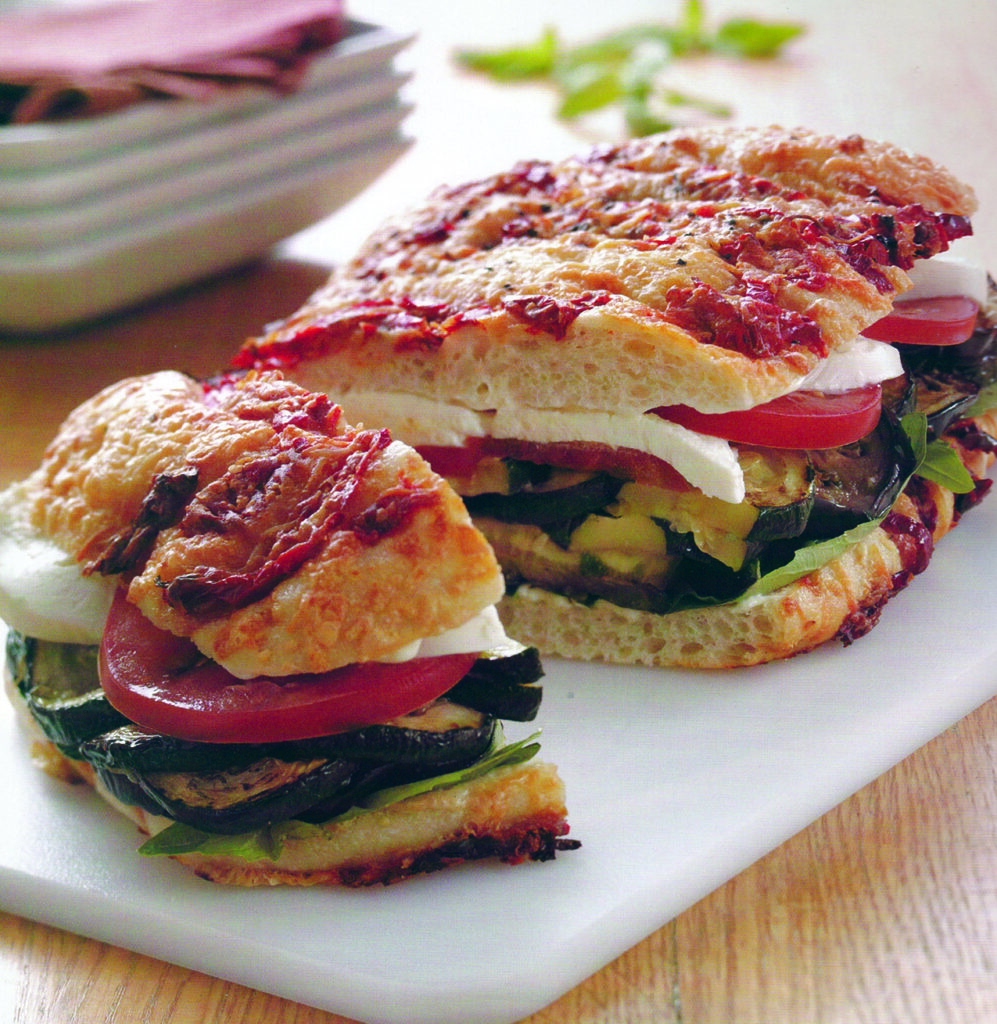
Roasted Vegetable Focaccia Sandwich
6 servings
1 medium eggplant
1 large zucchini
1 tablespoon olive oil
2 garlic cloves, pressed
Salt and coarsely ground black pepper (optional)
2 balls fresh mozzarella cheese (8 ounces), sliced
1 medium tomato, sliced
1 71/2-inch loaf focaccia bread (about 12 ounces)
1/4 cup reduced-fat mayonnaise
1/2 cup loosely packed fresh basil leaves
1. Preheat oven to 450 F. Cut eggplant and zucchini crosswise into 1/4-inch-thick slices. Combine eggplant, zucchini and oil in a mixing bowl. Press garlic into mixing bowl using a garlic press; toss to coat. Season with salt and black pepper, if desired.
2. Arrange vegetables in a single layer on a stoneware bar pan. Bake 25 to 30 minutes or until vegetables are tender and deep golden brown. Remove from oven to a cooling rack; cool slightly.
3. Meanwhile, cut mozzarella and tomato into 1/4-inch-thick slices. Cut bread in half horizontally. Spread mayonnaise on cut surfaces.
4. To assemble sandwich, arrange basil leaves, vegetables, tomato slices, and mozzarella slices over bottom half of bread. Top with top half of bread. Cut into slices and serve.
Click to expand



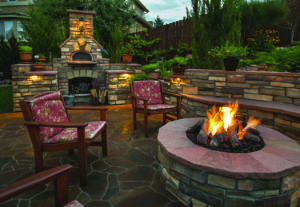
Must-have Items for Summer Entertaining in the Backyard
Summer entertaining season provides ample opportunities to soak up some sun and have some fun with family and friends. Backyard barbecues and other get-togethers at home are even more fun when hosts ensure they have certain must-have items for summer soirees.
· Fire features: The days when summer hosts only needed a few extra lawn chairs and some burgers and hot dogs on the grill for a backyard barbecue are long gone. Though those items still have a place at backyard barbecues, summer parties have taken a step up. Fire features, whether it’s a standalone fire pit, one built into a patio or a gas-powered fire table, are now wildly popular. Fire features provide a welcome place to relax and converse with guests after the sun goes down. And much to kids’ delight, a fire feature also paves the way for some post-meal s’mores.
· Insulated wine cooler: Coolers are great places to store water, soda, beer, seltzers, and other popular beverages. But what about wine? An insulated wine cooler ensures wine stays properly cooled but doesn’t get too cold, which can happen when wine is stored in a more traditional cooler filled with ice. Bottles are simply placed in the insulated cooler (much like canned beverages slide easily into can koozies), and the bottle can be kept on the table much like you would for formal dinners indoors. Hosts can go the extra mile by pairing insulated wine tumblers with their wine cooler.
· Games: Summer entertaining season might be all about relaxation, but games can up the fun factor at backyard gatherings. Cornhole is a wildly popular game, and customized cornhole boards can help hosts come across as party professionals. Ladder toss, bocce and wiffle ball are some additional games that can make the festivities more fun. Hosts who don’t have a pool also can invest in an inflatable pool big enough to fit all the kids who will be coming to the party.
· Outdoor storage cabinet: Hosts can save themselves the stress and effort of walking in and out for dinnerware and other table accessories by investing in a sturdy outdoor storage cabinet. As meal time draws near, hosts will appreciate that all the plates, napkins, utensils, and placemats are already outside. The top of the storage cabinet can double as a small but convenient buffet station for sides that aren’t being cooked over an open flame.
· Projector and screen: A projector and screen can really up the ante on summer entertaining, turning a backyard barbecue into a great place to watch a game or cuddle up after dinner for a movie night under the stars. Projectors and screens won’t bust the budget, but those who have more to spend may want to consider an outdoor television. Outdoor televisions are built to handle the glare of the summer sun, but a retractable awning may be a good safety net for hosts who plan to spend many a weekend afternoon outside watching games or movies with family and friends.
These are just a handful of items that can up the ante on traditional backyard barbecues. Homeowners should know that there’s no limit to the number of items that can make summer entertaining season more special.
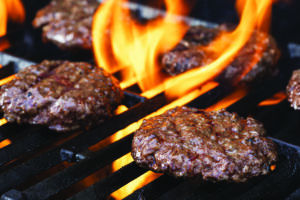
Make Your Memorial Day Barbeque a Success
Summer unofficially starts with the arrival of Memorial Day at the end of May. Although it is a holiday designed to honor American military personnel who have died in various wars, it also serves double-duty as a chance to gather with friends and loved ones and enjoy the return of the warm-weather entertaining season.
Barbecues are the centerpieces of Memorial Day celebrations. It may have been awhile since the grill was fired up, so anyone can use a little refresher course in barbecue etiquette. Here are some tips for making the most of Memorial Day parties.
Ready the grill
If your grill has lain dormant for several months, it’s wise to inspect and thoroughly clean it in advance of Memorial Day. Insects like spiders may have built homes inside, and grease and grime may be lingering from last year. Ensure the grill is in top form before cooking for guests.
Keep food safety in mind
A study from the U.S. Department of Agriculture found more than half of study participants don’t try to wash their hands when preparing food. Wash hands thoroughly to ensure guests do not get sick at the barbecue. Keep food refrigerated until it is ready to be cooked or served. Use a food thermometer to cook to the required internal temperature to make sure bacteria is destroyed. Do not use the same utensils that touched raw meat to remove cooked food from the grill.
Arrange for shade
It can get quite warm outdoors even in May for many areas of the country. Therefore, prepare a spot where guests can escape the sun. If you don’t have enough table umbrellas, consider light netting or canopies for shade. Shift them as needed as the sun moves across the sky.
Develop a signature rub
Set your food apart with unique flavors. Create a summer food rub using the herbs and spices you prefer. Make a big batch to use throughout the grilling season.
Don’t leave food sitting
The USDA’s Food Safety Inspection Service advises that food should not be left out for more than two hours, or one hour if the temperature is above 90 F. Keep buffet-style food covered so that insects do not land on the items and run the risk of contamination. Promptly move leftovers indoors if you plan on keeping them.
Offer a variety of beverages
It’s important to stay hydrated when the weather is warm. Stock the cooler with plenty of water, juices, iced teas, and the like. If you plan to serve alcoholic beverages, keep them separate from the non-alcoholic items so that children do not have access.
Make it a pot luck
If you will be hosting, reduce some of the work by having the main foods available and ask guests to bring the sides and beverages. This will defray the costs and relieve some of the pressure.
Memorial Day barbecues can be successful with some planning and simple safety measures.
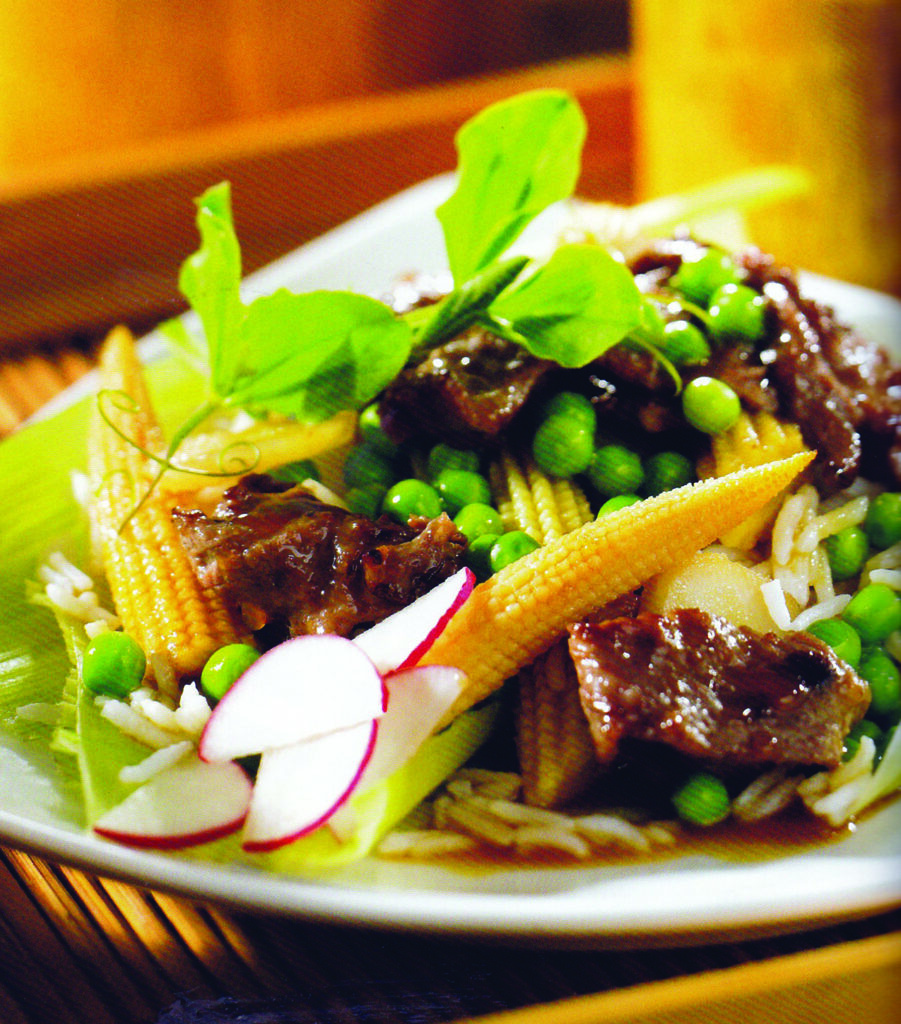
Speedy Beef Stir-Fry with Chunky Vegetables
Serves 4
1 tablespoon dry sherry or Shaoxing rice wine
1 tablespoon water
1/2 teaspoon soy sauce, optional
2 teaspoons cornstarch
8 ounces lean boneless beef, thinly sliced
3 tablespoons chicken stock
2 teaspoons soy sauce
1/2 teaspoon granulated sugar
1/2 teaspoon salt or to taste
2 tablespoons vegetable oil
2 teaspoons chopped garlic
2 teaspoons finely chopped fresh gingerroot
11/2 cups baby corn
1/2 cup sliced water chestnuts
1/2 cup frozen tiny peas
1. In a bowl, combine sherry, water, dark soy sauce, if using, and cornstarch and stir well into a smooth paste. Add beef and stir to coat well. Set aside for 10 minutes.
2. In a small bowl, combine chicken stock, soy sauce, sugar and salt and stir well.
3. Heat a wok or a large deep skillet over high heat. Add oil and swirl to coat pan. Add garlic and ginger and toss well until fragrant, about 15 seconds. Add beef mixture and spread into a single layer. Cook, undisturbed, until edges change color, about 1 minute. Toss well.
4. Add chicken stock mixture, baby corn and water chestnuts. Cook, tossing occasionally, until beef is cooked through., about 2 minutes more. Add peas and cook, tossing once for 1 minute more. Transfer to a serving plate. Serve hot or warm.
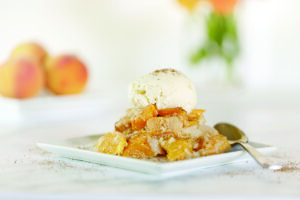
A Summer Dessert That is Just Peachy
Peaches are a nutritious summertime favorite. Peaches are antioxidant-rich, include a wide range of vitamins and minerals, and are rich in fiber. And there is no denying how sweet and tasty peaches can be, whether they’re plucked right from a tree or enjoyed in any number of recipes.
Cobbler is a type of dessert that gained popularity in the United States during the 19th century. It is made by putting fruit in a deep baking dish and then topping it with a drop biscuit batter and sometimes a crumb topping. Any number of fruits work well in cobblers, including apples, pears and various berries. However, peach cobbler is the quintessential summertime treat.
Cobbler gets its name from the fact that early American settlers didn’t have strict recipes with exact measurements for ingredients, so they took what they had and “cobbled” them together.
Today’s cobbler bakers enjoy the benefits of having more direction when putting together their desserts. This recipe for “Southern Peach Cobbler” comes courtesy of Paula Deen.
Southern Peach Cobbler
Serves 15
11/2 cups self-rising flour
1 stick butter
1/2 cup water
2 cups sugar, divided
4 cups peaches, peeled and sliced
1 cup milk
Ground cinnamon (optional)
Preheat oven to 350 F.
Combine the peaches, 1 cup sugar, and water in a saucepan and mix well. Bring to a boil and simmer for 10 minutes. Remove from the heat.
Put the butter in a 3-quart baking dish and place in oven to melt.
Mix remaining 1 cup sugar, flour, and milk slowly to prevent clumping. Pour mixture over melted butter. Do not stir.
Spoon fruit on top, gently pouring in syrup. Sprinkle top with ground cinnamon, if using. Batter will rise to top during baking. Bake for 30 to 45 minutes.
To serve, scoop onto a plate and serve with your choice of whipped cream or vanilla ice cream.
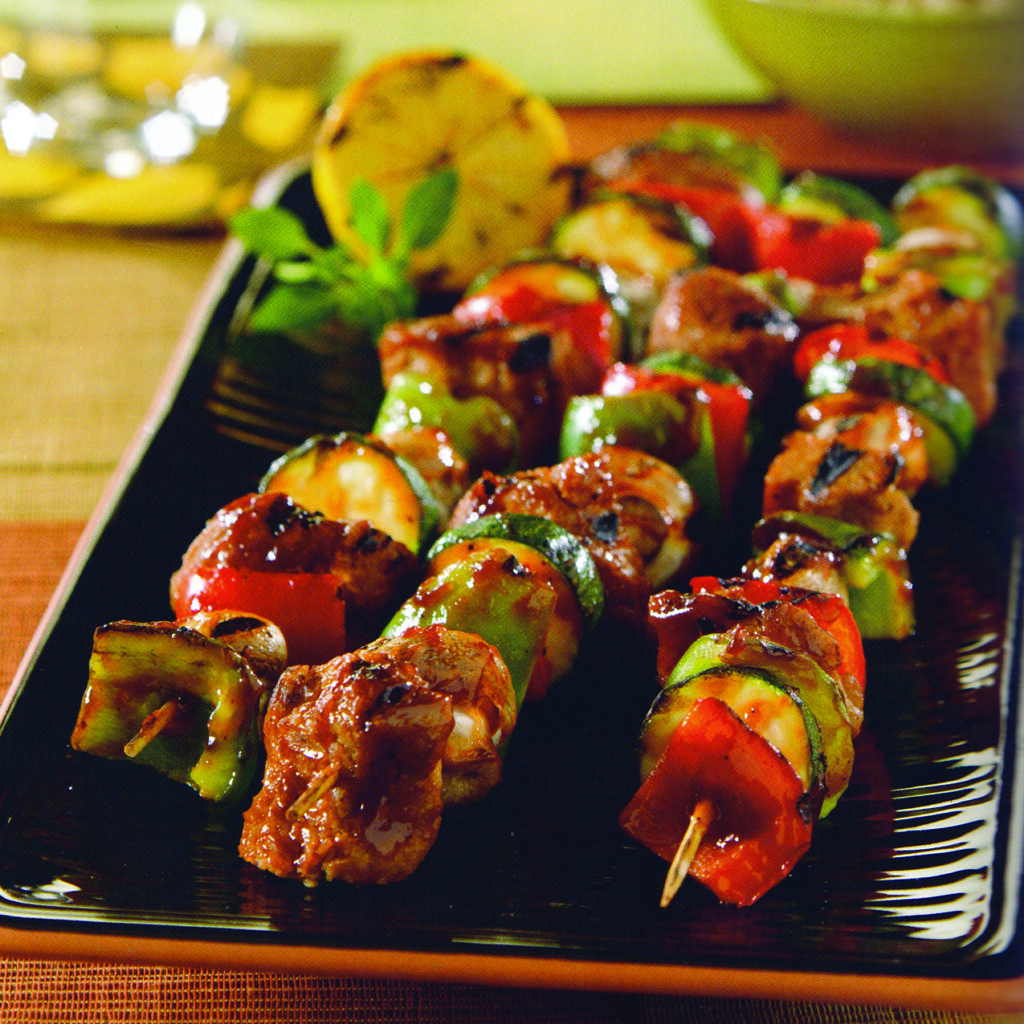
Barbecue Seitan Skewers
Makes 4 servings
1 package (8 ounces) seitan, cubed
1/2 cup barbecue sauce, divided
1 red bell pepper, cut into 12 pieces
1 green bell pepper, cut into 12 pieces
12 white or cremini mushrooms
1 succhini, cut into 12 pieces
1. Place seitan in medium bowl. Add 1/4 cup barbecue sauce; stir to coat. Marinate in refrigerator 30 minutes. Soak four bamboo skewers in water 20 minutes.
2. Oil grid. Prepare grill for direct cooking. Thread seitan, bell peppers, mushrooms, and zucchini onto skewers.
3. Grill skewers, covered, over medium-high heat 8 minutes or until seitan is hot and glazed with sauce, brushing with some of remaining sauce and turning occasionally.
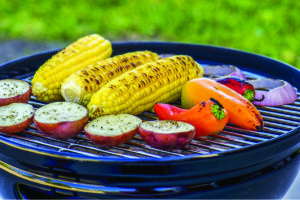
How to Make Grilling Healthier
Summer is synonymous with many things, including family vacations and relaxing days at the beach. For foodies, perhaps nothing evokes the spirit of summer more effectively than grilled foods.
Grilling is a beloved tradition, but it’s not necessarily the healthiest way to eat. Traditional backyard barbecue fare like hot dogs and hamburgers likely won’t make physicians’ hearts flutter, but there are ways to enjoy the flavor of grilling without compromising a nutritious diet.
· Replace burgers and hot dogs with healthy proteins. The occasional hamburger or hot dog won’t do much damage, but people who regularly grill should skip these summertime staples and replace them with healthy proteins. The American Heart Association reports that fish and skinless chicken breasts are healthy alternatives to hamburgers and hot dogs. Burger devotees can still enjoy their go-to grilled food, but replace ground beef with lean ground poultry, which contains less saturated fat than red meat.
· Avoid overdoing it. Most people have overindulged at a backyard barbecue at one point or another. The relaxed, party-like atmosphere of the backyard barbecue makes it easy to snack on chips and other unhealthy fare before moving on to burgers and hot dogs. Hosts can do guests a favor by replacing snacks and sides like chips and potato salad with healthier fare like celery, fruit salad or chickpea salad. Keep portions of grilled fare as close to a healthy size as possible. The AHA notes that a healthy portion of meat is around three ounces and no more than six ounces.
· Create a salt-free rub. There’s no denying salt makes food more flavorful. But that flavor comes at a high cost. The health care experts Piedmont note that excessive amounts of salt can contribute to inflammation from fluid retention and increase a person’s risk for hypertension, or high blood pressure. Salt may be a go-to for many grilling enthusiasts, but it doesn’t have to be. A salt-free rub made with chili powder, garlic powder, paprika, and/or other spices is an effective and salt-free way to add flavor to meat, chicken and fish.
· Grill more vegetables. Grilled vegetables, whether they’re part of kebabs or simply grilled alongside the main course, add significant flavor and provide all the health benefits of veggies cooked in more traditional ways. The AHA notes that coating vegetables in a healthy oil like olive oil makes it easy to grill them directly over an open flame without sticking. Cooking in this way imparts that signature smoky, grilled flavor to vegetables.
This summer, grilling can be as healthy as it is flavorful. All it takes is a few simple strategies to make the menu at your next backyard barbecue one any doctor would love.
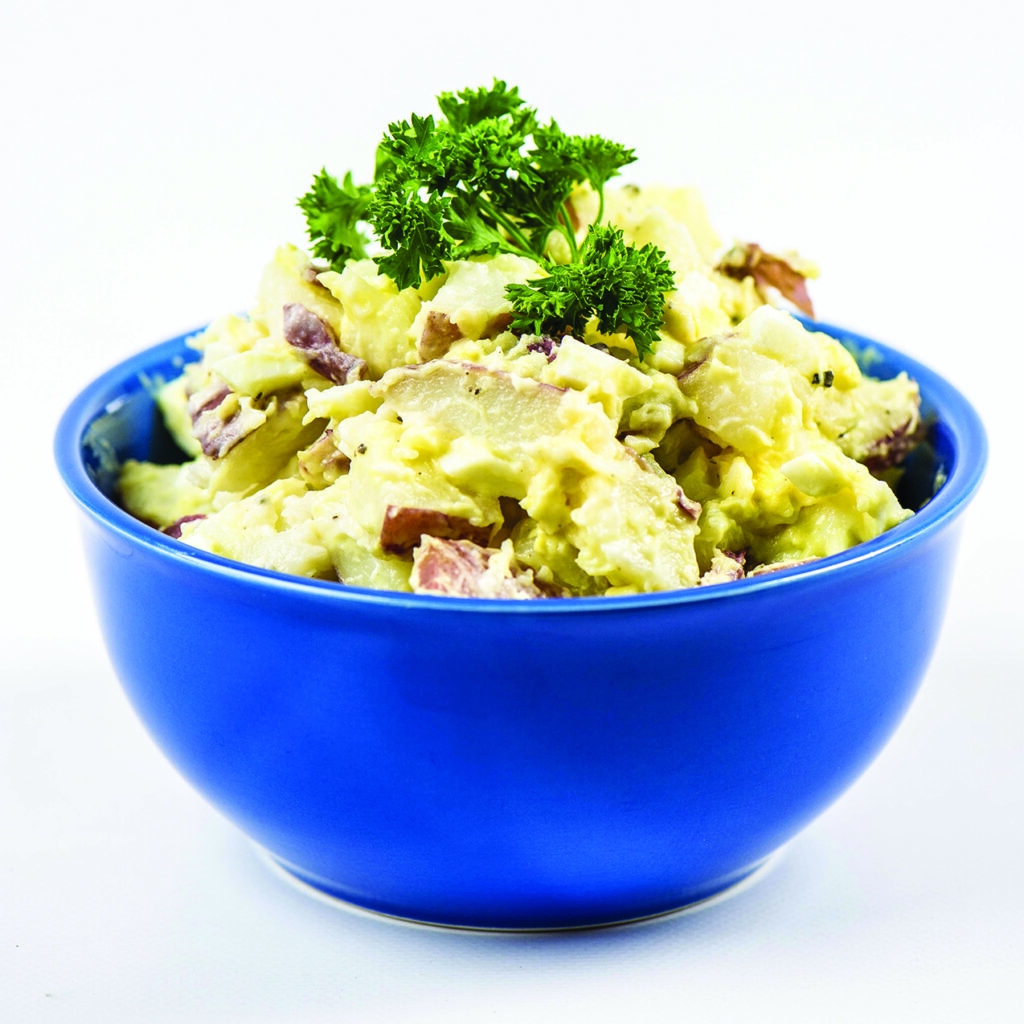
Greek Yogurt Potato Salad
Serves 6
2 pounds potatoes (Yukon Gold or red potatoes)
1/2 onion
6 eggs
1 cup plain Greek yogurt
4 tablespoons sour cream
1 tablespoon vinegar
2 tablespoons yellow mustard
3/4 teaspoon salt
1/2 teaspoon black pepper
1/2 teaspoon celery seed
1/2 teaspoon dried dill weed or 1 teaspoon fresh
1/2 cup dill pickles, chopped
Paprika, for garnish (optional)
Parsley, for garnish (optional)
1. Peel and dice potatoes and onions. Put them and a teaspoon of salt in a pressure cooker and cover with an inch of water. Close valve. Set pressure cooker to high pressure. Set timer for 5 minutes, cook and quick release when it’s done. Drain potatoes. Cool until just warm. (If you don’t have a pressure cooker, boil potatoes in a pot of water on the stove until tender.)
2. Set eggs on a rack in the pressure cooker. Add 1/2 inch of water. Close valve, set to high pressure for 5 minutes. Cook for 5 minutes, quick release, and leave lid closed for 5 minutes. After 5 minutes, take lid off. Drain eggs and cover with ice water to stop the cooking process. Let sit in ice water bath for about 5 minutes, then peel eggs. (If you don’t have a pressure cooker, hard-boil eggs according to your favorite recipe.)
3. Add Greek yogurt, sour cream, mustard, vinegar, salt, pepper, celery seed, and dill weed to a large mixing bowl. Stir until smooth. You can taste test to see if you need to add ingredients.
4. Add cooled, diced potatoes, pickles and hard-boiled eggs. Gently stir until potatoes are coated with dressing. Adjust seasonings to taste. Refrigerate for at least 1 hour.
Notes: Yukon Gold or red potatoes hold their shape best in potato salad. White distilled vinegar is classic in potato salad, but you also can use cider vinegar, white wine vinegar or even lemon juice.
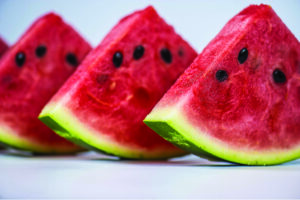
Helpful Tips for Picking & Cutting Watermelon
Watermelon is a summertime staple. Each summer, stores and farm stands have an abundance of watermelons on display, and many people feel no picnic or barbecue is complete without watermelon.
Watermelon is a refreshing option on hot days. It’s ideal sliced and served, or can be included in fruit salads, smoothies or even “spiked” cocktails. The key to a tasty watermelon is knowing how to pick one that is ripe, while serving watermelon comes down to understanding some easy cutting strategies.
· Choose a watermelon that has a firm, symmetrical shape. Avoid melons with bumps, dents or cuts.
· Watermelons should be relatively heavy. They’re 92 percent water, and that juiciness should be reflected in a substantial weight for the melon’s size.
· Watermelon.org advises looking for a creamy yellow spot on the underside of the watermelon. This is called the “ground spot.” It indicates where the melon sat on the ground and ripened in the sun. Once cut from the vine, a watermelon has about three to four weeks to be consumed.
· All parts of the watermelon are edible, including the seeds and rind. The rind can be pickled or cut up to use in stir-fry dishes.
When bringing watermelon to an event, it is a courtesy to bring it already sliced or cut up. This ensures the host or hostess does not have to tackle what can sometimes be a chore. Here are three techniques to cut a watermelon easily.
Cubes
1. Cut both ends off of the watermelon.
2. Stand the watermelon on one sliced end. Use the knife to slice down and cut off the rind.
3. After removing the rind from all sides of the melon, cut into discs about 1/2-inch in thickness.
4. Then cut those discs into cubes.
Slices
1. Cut the watermelon in half lengthwise.
2. Take one cut half and place it cut-side down.
3. Cut the watermelon into slices.
4. Repeat for the other cut half.
Strips
1. Cut the watermelon as you would with the slices. Rather than leaving it in large slices, turn the watermelon and cut the same size slices in the opposite direction. This creates strips that are easy for kids to grab and maneuver.
2. Repeat with the other half of the watermelon in the same manner.

Outdoor Movie Night Essentials
Outdoor movie nights can be a great way to spend warm evenings with friends and loved ones. The guest list is only limited by the seating you have, and even then, movie watchers easily can sit on picnic blankets, making it simple to host a crowd.
Movie nights outdoors may be different than those in a theater or living room, but certain must-have items are no less important. No movie night under the stars is complete without these essentials.
Projector and screen
A screen and a way to project the movie are must-haves for any outdoor movie night. Projectors should be small enough that they can be carried outside, but large enough to emit enough light to fill the screen. Options range anywhere from $400 and up for quality projectors.
Screens run the gamut from inflatable and free-standing options to white sheets hung from a clothesline. A dedicated screen will be more stable and look better, but it all comes down to budget.
Portable speaker
A portable speaker can be moved anywhere you need it. A speaker with an auxiliary input enables you to hook it up to your video source so that the audio-video synchronization is top notch. After all, wireless connections may lag. The speaker will be functional for movie nights as well as music and entertainment for any outdoor event going forward. If your yard is large, you may need more than one speaker.
Media source
Individuals have various options for media players. Small players can plug directly into projectors and are the easiest sources for backyard movies if the Wi-Fi signal in the yard is strong. You also may be able to connect a mobile phone or laptop/tablet into the projector, relying on those devices to stream content.
Seating
Folding camp chairs are portable and can be stored for guests who prefer being off the ground for movie nights. Otherwise, thick, waterproof blankets enable guests to spread out while watching movies outdoors. They’re also great for kids who are liable to spend a portion of the time watching the movie, but much of it running around the yard.
Theater-style popcorn maker
Kernels, oil and heat are the perfect combination for producing movie-theater-worthy popcorn. Place plenty of reusable popcorn containers nearby so guests can bring their bounty back to their seats. Canned beverages with straws also are portable and pair well with popcorn for a great movie experience.
Lighting
Outdoor stringed lighting adds ambiance and safety to a space. However, you also may want to consider using some solar-powered staked lights on the ground to map out aisles and make it easier for guests to navigate the yard in the dark.
These basics can get anyone started on hosting regular outdoor movie nights.
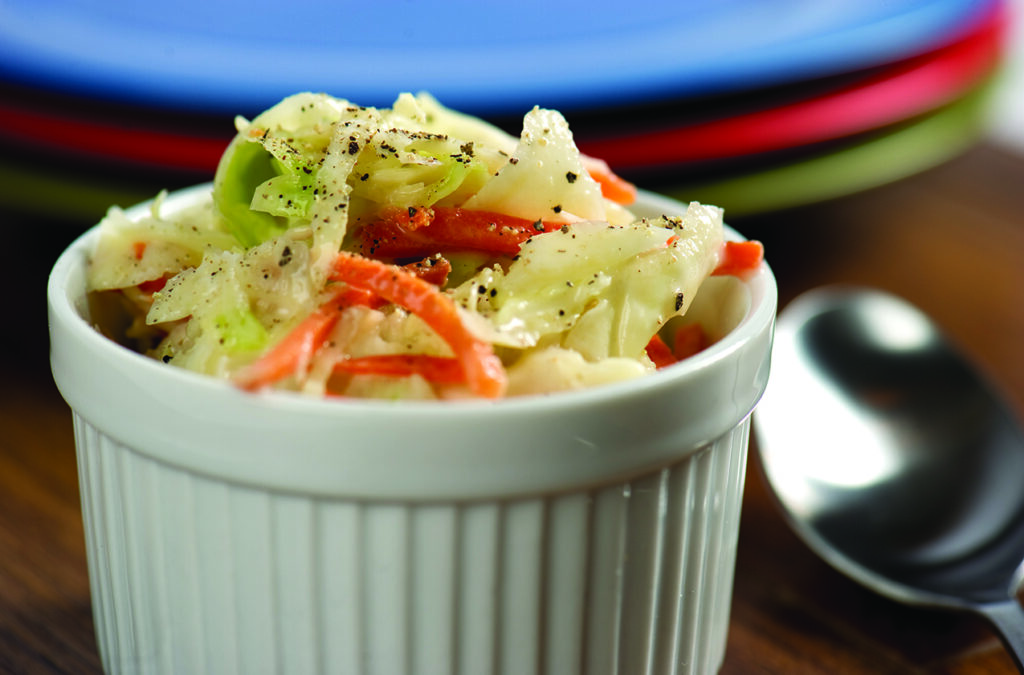
Classic Coleslaw
Serves 6 to 8
1 cup Hellmann’s® or Best Foods® Real Mayonnaise
3 tablespoons lemon juice
2 tablespoons sugar
1/2 teaspoon salt
6 cups shredded cabbage
1 cup shredded carrot
1/2 cup chopped green bell pepper
Combine mayonnaise, lemon juice, sugar, and salt in a large bowl. Stir in cabbage, carrots and green pepper. Chill, if desired.
Tip: For an even quicker prep time, use bagged coleslaw mix instead of shredding the cabbage and carrots.

Backyard Barbeque Essentials
Summer barbecue season has arrived, and this season may be an especially active one.
Many summer barbecues were called off in 2020 as the world continued to confront the COVID-19 pandemic. But as the number of fully vaccinated adults rises across the United States and Canada, outdoor gatherings like backyard barbecues are much safer than they were a year ago. That bodes well for backyard barbecue enthusiasts who can’t wait to cook their favorite foods over an open flame.
Since so many backyard gatherings were canceled last year, now may be a great time to revisit the essential components that make barbecues such a beloved summertime tradition.
· Furniture: In early spring, fully vaccinated individuals were given the go-ahead to gather mask-free with fully vaccinated people from other households. That was a relief for people who are itching to spend time with family and friends after more than a year apart. If you’re planning to host a backyard barbecue this summer, inspect your outdoor furniture for wear and tear, especially if you did not bother to take it out of the garage last summer. A thorough cleaning might be in order. Many outdoor furniture retailers have replenished their inventory since last summer, when supply chains were interrupted by the pandemic. So if your existing furniture has seen better days, now is the time to replace it.
· Food: Ask guests if they have any food allergies prior to the barbecue. Let it be known that anyone with a food allergy can bring their own foods without fear of offending hosts. If someone does have an allergy, set aside some freshly cleaned dishes for them in the days before the party. Make sure those dishes are not kept alongside other serving dishes so guests have uncontaminated plates and cutlery to use when they arrive. When planning the menu for people without food allergies, don’t forget traditional fare like hamburgers and hot dogs. Such foods might not be fancy, but they will lend a little normalcy to the festivities. And be sure to stock up on supplies for s’mores so everyone can finish the night off with a delicious dessert around the firepit.
· Games: A new cornhole set, some frisbees and even a few extra baseball mitts and baseballs can ensure everyone has something to do in between hamburgers. If you have the room in your backyard, set up a wiffle ball field and encourage willing guests to make teams and play a game of wiffle ball.
· Audio/visual entertainment: An outdoor movie screen or television and some surround sound speakers can allow those interested to watch a game during the barbecue. If yours is more of a musical crowd, some Bluetooth speakers around the backyard set to a relaxing summer playlist can help to establish the perfect backyard barbecue ambiance.
· Miscellaneous items: Many adults are fully vaccinated, but the vaccine had yet to be approved for kids under 16 as recently as mid-spring. If families with kids under 16 will be coming over, purchase extra masks to keep kids safe. It’s also a good idea to stock up on hand sanitizer and make it available in the backyard as well as inside near doorways and in bathrooms.
As summer hits full swing, now is a great time for homeowners to revisit the essentials for throwing a backyard barbecue to remember.
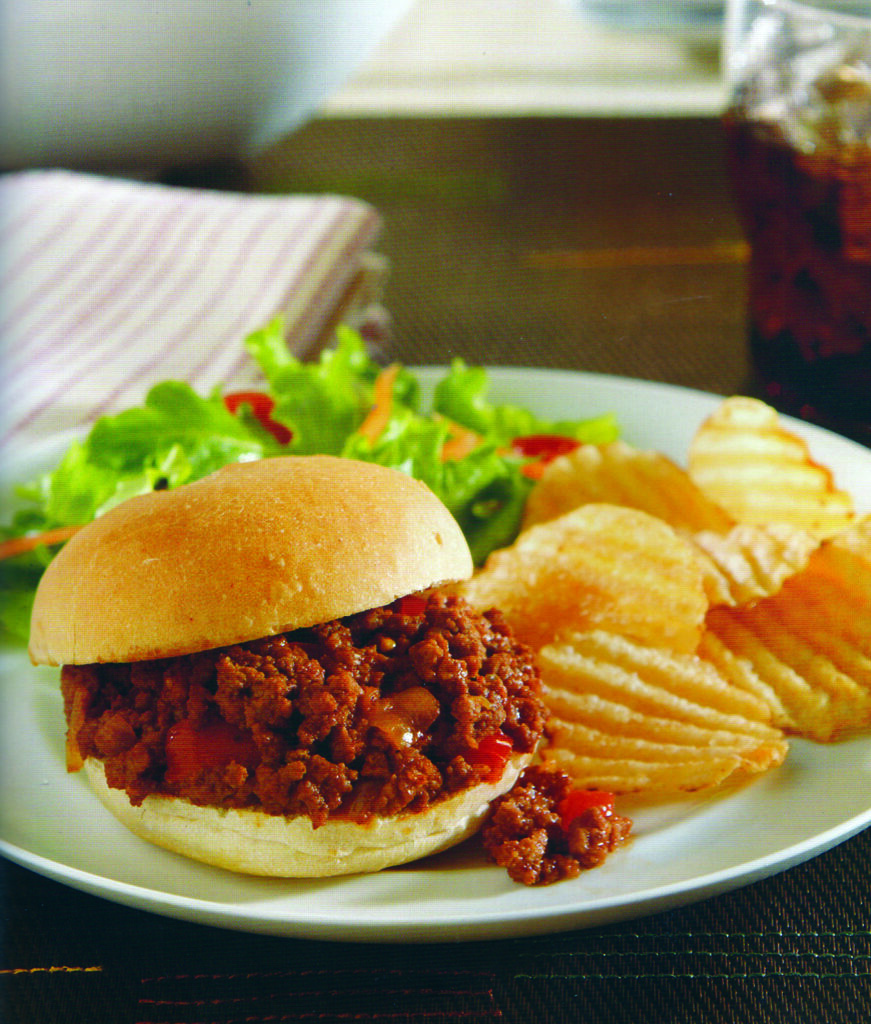
Sloppy Joes
Makes 8 servings
3 pounds 95 percent lean ground
beef
1 cup chopped onion
3 cloves garlic, minced
11/4 cups ketchup
1 cup chopped red bell pepper
1/4 cup plus 1 tablespoon Worcestershire sauce
1/4 cup packed dark brown sugar
3 tablespoons prepared mustard
3 tablespoons vinegar
2 teaspoons chili powder
Toasted hamburger buns
1. Cook and stir ground beef, onion and garlic in large nonstick skillet over medium-high heat until beef is browned and onion is tender. Drain and discard fat.
2. Combine ketchup, bell pepper, Worcestershire sauce, brown sugar, mustard, vinegar and chili powder in a slow cooker. Stir in beef mixture. Cover; cook on low 6 to 8 hours. To serve, spoon mixture onto hamburger buns.
Did you know? Many recipes include Worcestershire sauce to add a tangy bite to the dish known as unami, or the savory fifth flavor. Worcestershire sauce contains vinegars, molasses anchovies, and tamarind extract to give it that specialty flavor. This fermented liquid condiment was created in the city of Worcester in Worcestershire, England during the first half of the 19th century. Creators John Wheeley Lea and William Henry Perrins were chemists, and they would later go on to form the food company Lea & Perrins. Because Worcestershire sauce contains anchovies, it is not suitable for those who have fish allergies.
Tip: To make Sloppy Joes slightly less sloppy, serve on bite-sized slider rolls.

Improve Comfort When Dining Outdoors
Warm weather entices people to enjoy long hours outside basking in the sun or relaxing on balmy evenings. Many of the activities people once reserved for indoors when temperatures were chilly, including dining, are moved outside as the weather warms.
Even though outdoor dining can be quite enjoyable, certain factors need to be considered to ensure that each experience is as pleasurable as possible. This means focusing on comfort whenever meals are taken out-of-doors.
Address insects
Insects are equal opportunity invaders. Once they smell sweet or savory food items, they quickly descend for an easy bite. This means extra steps are necessary to dissuade insects from coming by. Invest in citronella candles, which can be placed around the patio to repel flying bugs. Clean up crumbs and spills promptly. Bees and wasps can be lured away with sweet traps placed around the perimeter of the property.
Offer shade
Too much sun can make outdoor meals less enjoyable. A patio umbrella, pergola or canopy can cut down on glare and make the dining area more comfortable. Check to see that the shade source can be adjusted to guard against the sun as it moves across the sky.
Dress up seating
Just because furniture is made for outside doesn’t mean it has to be uncomfortable. Many companies now produce very durable and attractive outdoor furniture. Weather-resistant fabrics mean rain or sunlight will not age items too quickly.
Reusable place settings
If you frequently dine outdoors, you may want to dine in style. Instead of disposable paper or plastic place settings, invest in colorful, durable, reusable plastic dishes, glasses and flatware, which will not break if dropped and can hold up to a dishwasher when it is time to clean up.
Create the right ambiance
Invest in outdoor lighting, candles and hidden speakers to pipe in music and create ambiance. Install privacy screens and foliage to establish a nice nook for outdoor dining.
Outdoor dining areas can be improved with some easy modifications to existing spaces.
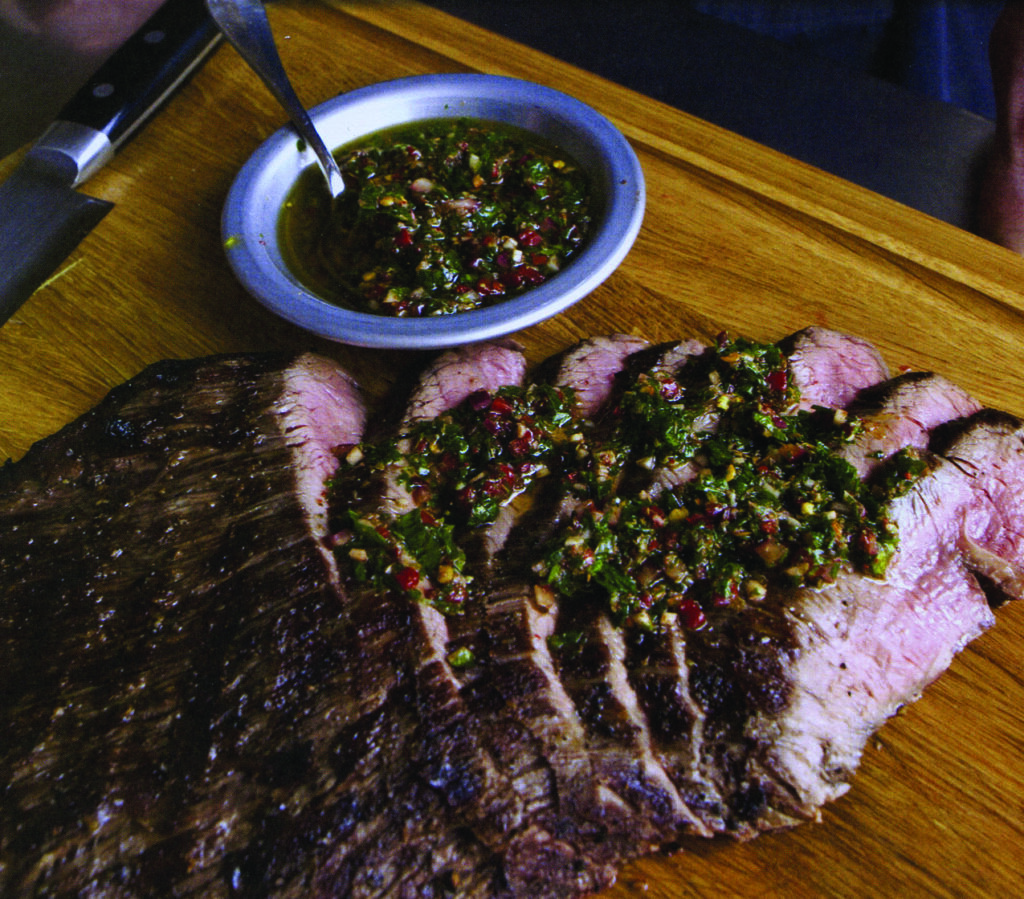
Grilled Flank Steak with Chimichurri
Makes 4 servings
1/4 cup dried porcini mushrooms
1 carrot, peeled and thinly sliced into rounds, about 1/2 cup
1 stalk celery, thinly sliced into half-moons, about 1/2 cup
1 Vidalia onion, cut into thinly sliced strips
1 clove garlic, thinly sliced
1 tablespoon ground black pepper
1 cup red wine
2 pounds flank steak, trimmed
1 cup Chimichurri (see box)
Grapeseed oil
Salt
1. Combine the mushrooms, carrots, celery, onion, garlic, black pepper, and red wine in a large zip-top plastic bag. Add the steak, press out all the air and seal the bag. Refrigerate for 8 hours or overnight.
2. Heat a grill for direct high heat. Pull the meat out of the marinade and brush off any vegetables or herbs. Pat the meat completely dry with paper towels and brush all over with grapeseed oil. Aggressively season both sides of the steak with salt.
3. Scrape the grill clean and coat it with oil. Set the steak over direct heat on the grill with the grain at a 45-degree angle to the grates; grill for 5 minutes. Rotate the steak 90 degrees and grill for 3 minutes. Flip the steak so the grain is again at a 45-degree angle to the grates; grill for 5 minutes more. Rotate 90 degrees and cook to rare (120 to 125 F internal temperature), about 2 minutes longer. Transfer the steak to a plate and let the meat rest for 5 minutes. Slice the steak very thinly across the grain. Serve with the chimichurri sauce. PC146263
SIDEBAR: Chimichurri
Makes about 1 cup
1/4 cup fresh flat-leaf parsley leaves, chopped
2 tablespoons chopped fresh oregano leaves
1/4 cup olive oil
2 tablespoons red wine vinegar
1 tablespoon dried oregano
1 teaspoon salt
1/4 teaspoon Espelette pepper
1 tablespoon finely chopped red onion
1 tablespoon finely chopped roasted red pepper
2 teaspoons garlic, minced
1/2 teaspoon dried red pepper flakes
Mix the parsley, fresh oregano and olive oil and set aside. The oil prevents the herbs from oxidizing (turning brown). In a separate bowl, whisk the vinegar, dried oregano, salt, and Espelette pepper until the salt dissolves. Stir in the onion, roasted red pepper, garlic, and red pepper flakes and set aside. Just before serving, mix the oil mixture with the vinegar mixture.
Prep ahead: You can make the chimichurri up to 8 hours ahead; just refrigerate the oil mixture and vinegar mixture in separate bowls. Combine them just before serving. Chimichurri is versatile. Try it on any grilled meat, on grilled shrimp or even on roasted oysters.
Click to expand



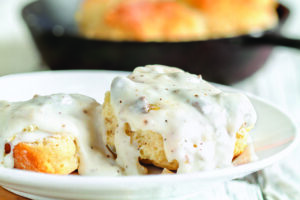
What is Country Cooking?
Country cuisine can be enjoyed anywhere but is perhaps most synonymous with the southeastern region of the United States.
Rich flavors, familiar foods and large portions are hallmarks of country cooking. However, ingredients may vary by region, and the backgrounds of the people living in these parts of the country also may contribute to some unique recipes on traditional favorites. The following are five types of country cuisine and the foods associated with each tradition.
Creole/Cajun
Creole and Cajun cooking have similar influences but are not entirely the same. Creole originated in Louisiana and uses cooking techniques from Spain and France, but spices and ingredient combinations passed down from African cultures and Native Americans. Gumbos and bread puddings are popular Creole dishes. Cajun cooking originated when French Canadians migrated to Southern Louisiana in the mid-1700s. Popular Cajun dishes incorporate crawfish, alligator and frog.
Low country
The low country is the South Carolina coast. Low country cuisine utilizes seafood taken fresh from the coastal waters to make savory dishes that are similar to Creole and Cajun dishes. Rice, shrimp, grits, and okra are popular ingredients in low country cooking.
Appalachia
Those in the central Appalachian mountains have a cuisine all their own that spans several different states. As farms are prevalent in these areas, farm-fresh foods that are homegrown are quite common. Chicken and dumplings, chili beans, cobblers, biscuits and gravy, and wild game all are part of Appalachian cooking.
Soul food
Soul food gained steam during the 1960s when Black Americans aspired to honor their ties to country cooking as well as their heritage. Comforting and familiar dishes include collard greens, candied yams, fried chicken, sweet potato pie, and macaroni and cheese. These dishes are universally enjoyed by people of all races and cultures. And as Black individuals moved out of the South, they brought their meals and cooking styles with them.
Country cooking is unique, flavorful and comprised of the foods and techniques honed by people from many cultures.
Click to expand



Did You Know?
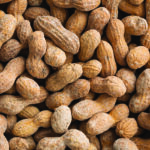
Awareness of peanut allergy:
Parents of school-aged children are undoubtedly familiar with the notion of “nut-free” classrooms and cafeterias, which typically indicates educators have declared school grounds off limits for peanuts and peanut butter. The prevalence of such environments may suggest peanut allergies have increased in recent years, and while that might be true, it’s also not necessarily so. In fact, the American College of Allergy, Asthma & Immunology notes that awareness about peanut allergy has risen in recent years. And while a 2017 study found that incidence rates of peanut allergy had increased by 21 percent since 2010, that could be a byproduct of heightened awareness of peanut allergy and not necessarily indicative that considerably more individuals are now allergic to peanuts. Recognition of that reality may make some people pause before they dismiss peanut allergy, which the ACAAI notes can cause anaphylaxis, a life-threatening response to an allergen marked by impaired breathing, swelling in the throat and a sudden drop in blood pressure, among other symptoms.
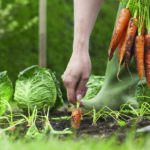
Higher cost of food:
Inflation has garnered countless headlines in recent years, and much of that news has focused on the notably higher cost of food. Though the cost of some items at the grocery store has gone down in 2024, many items remain significantly more expensive than they were as recently as three or four years ago. In an effort to overcome rising food costs, some consumers have thought about gardening. According to Washington State University, the average household with a food garden spends around $70 per year on seeds and garden supplies. The reward for that small investment is roughly $600 worth of food. Though the financial investment associated with a food garden might be minimal, it’s important for prospective gardeners to recognize that the commitment of time required to establish and sustain a food garden can be significant.

Soybeans are a heart-healthy option:
Parents of school-aged children are undoubtedly familiar with the notion of “nut-free” classrooms and cafeterias, which typically indicates educators have declared school grounds off limits for peanuts and peanut butter. The prevalence of such environments may suggest peanut allergies have increased in recent years, and while that might be true, it’s also not necessarily so. In fact, the American College of Allergy, Asthma & Immunology notes that awareness about peanut allergy has risen in recent years. And while a 2017 study found that incidence rates of peanut allergy had increased by 21 percent since 2010, that could be a byproduct of heightened awareness of peanut allergy and not necessarily indicative that considerably more individuals are now allergic to peanuts. Recognition of that reality may make some people pause before they dismiss peanut allergy, which the ACAAI notes can cause anaphylaxis, a life-threatening response to an allergen marked by impaired breathing, swelling in the throat and a sudden drop in blood pressure, among other symptoms.













